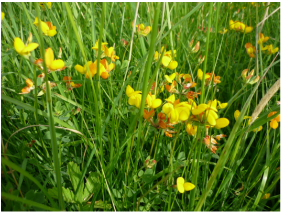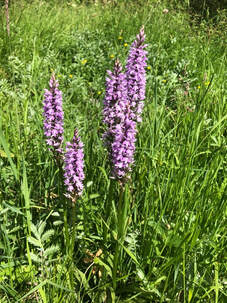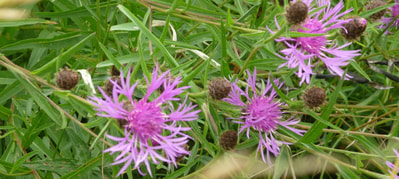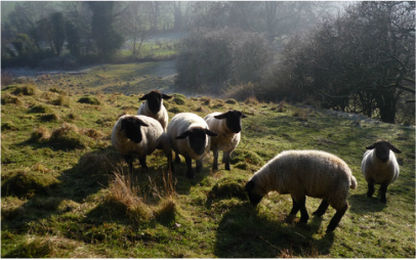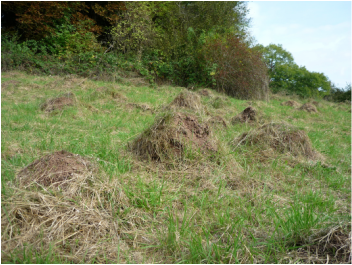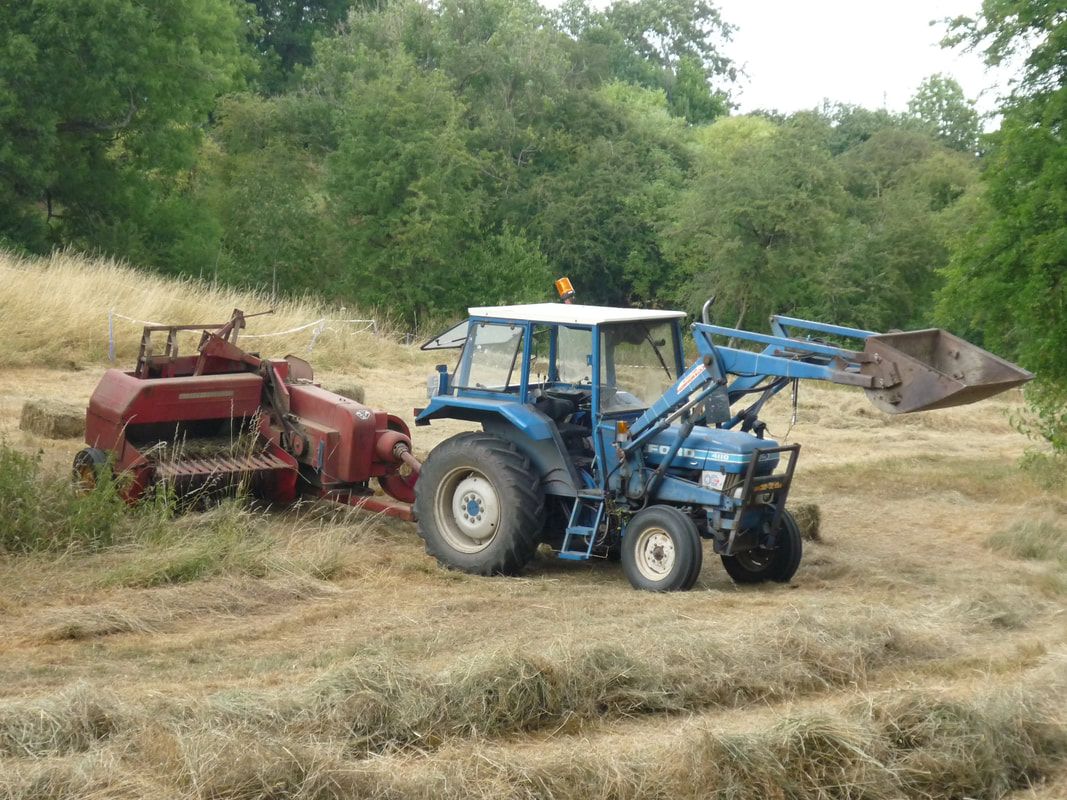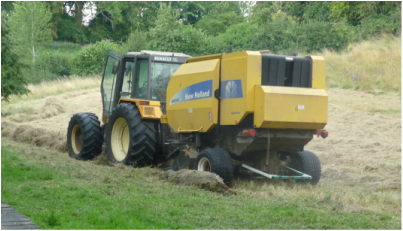Wildlfower grassland
The wildflower grassland on the slopes of the Millennium Green is a remnant of the lowland neutral grassland which was once common in lowland Britain. Over 95% has been lost since World War II.
The Millennium Green is designated a Local Wildlife Site because of this special grassland, and it is managed under a Higher-Level Stewardship agreement with Natural England to improve and extend it in both fields. The characteristic flowers of this type of grassland include Knapweed, Lady's Bedstraw, Meadow Vetchling, Agrimony, Birds Foot Trefoil, Field Scabious, Cowslips, Salad Burnet, Burnet Saxifrage and Yellow Rattle. In all around 50 flowering plants including about 15 grasses have been recorded. A link to our Flower-rich Grassland information board and details of surveys can be found under Documents.
The Millennium Green is designated a Local Wildlife Site because of this special grassland, and it is managed under a Higher-Level Stewardship agreement with Natural England to improve and extend it in both fields. The characteristic flowers of this type of grassland include Knapweed, Lady's Bedstraw, Meadow Vetchling, Agrimony, Birds Foot Trefoil, Field Scabious, Cowslips, Salad Burnet, Burnet Saxifrage and Yellow Rattle. In all around 50 flowering plants including about 15 grasses have been recorded. A link to our Flower-rich Grassland information board and details of surveys can be found under Documents.
|
Most of the grass in the first field is cut for hay after July15th which gives flowers time to set seed. The parts with the anthills near the upper seat are strimmed in late August or early September. All grass is removed which reduces the fertility and encourages wildflowers. The second field is grazed by about 5 sheep from September right through the winter and they may stay as late as March. They eat down the grass so that it is short at the beginning of the growing season which again helps to encorage wildflowers which have spread successfully throughout this field. We may not have the rare plants sometimes associated with this sort of grassland, but we have had up to five Common Spotted Orchid spikes over the last few years (see above)
|
|
The best time to see the wildflowers in the first
field is between April and mid-July before the hay is cut. |
There are many anthills on the upper slopes in both fields and they are typical of this sort of grassland which has not been ploughed for hundreds of years. The existence of the ridge and furrow also indicates that it has been left as grassland for a very long time. Fungi found in the grassland include waxcaps, puffballs, inkcaps, blewits, field mushrooms and fairy ring mushrooms. Later flowering plants such as knapweed can be seen on the upper slopes in the first field and in the second field until late August or September |
